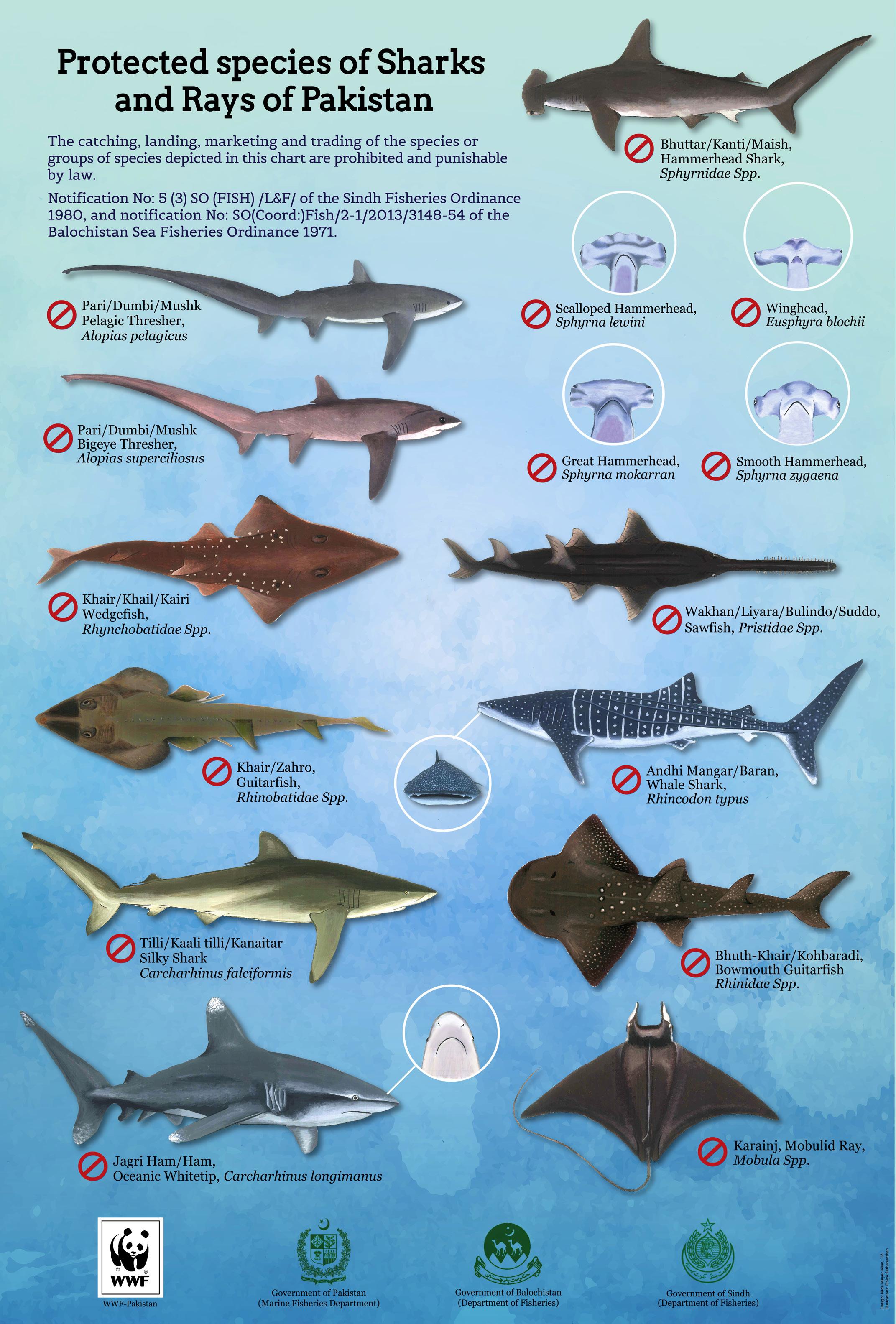
2 minute read
Pakistan sawfish status and update
PakistanSawfish status and update
Muhammad Moazzam Khan
Advertisement
WWF-Pakistan | Technical Advisor Member of the IUCN SSC Shark Specialist Group (SSG)
Sawfishes have become one of the rarest groups of marine animals with many populations at high risk of extinction. Three species of sawfishes, i.e. Narrow (Anoxypristis cuspidata), Largetooth tooth (Pristis pristis) and Green (Pristis zijsron), are known from Pakistan. Information about sawfishes in Pakistan is available through the work efforts of Moazzam and Osmany (2014). However, because of overfishing and habitat degradation, populations of sawfishes has decreased substantially, and they are now considered to be nearly locally extinct. In the past twelve years, only five authentic records of their occurrence in Pakistan have been recorded. • On September 11, 2009, a 1.4-meter long Pristis pristis was landed at Gwader Fish Harbour; • In June 2013, a large specimen of sawfish was caught at
Khajr Creek near the mouth of the River Indus; • A Largetooth Sawfish was landed at Karachi Fish Harbour on May 11, 2015; • A 10-foot long Largetooth Sawfish was caught dead by a fisherman on January 17, 2016, near Surbandar Gwadar. • A 15-feet long Largetooth Sawfish was caught on May 26, 2018, between the mouth of Turshian and Khajar Creek
The Largetooth Sawfish used to be the most dominating species of sawfish occurring in Pakistan. It inhabits coastal waters but sometimes ascends rivers. In 1962, a large specimen of sawfish was caught at Hyderabad near Ghulam Muhammad Barrage about 170 km from the coastline.
Historically sawfishes used to dominate among shark and ray species. Because of the introduction of motorized fishing vessels and nylon nets, their populations started to dwindle, and now, these species are almost extinct. The main areas of sawfish fishRegion Update: Indian Ocean
ing in Pakistan were Miani Hor (Sonmiani), Kalmat Khor, Jiwani, Gwadar, and the Indus Delta, especially Khajar Creek. Sawfish meat used to be exported to Sri Lanka along with other sharks in salted, dried form. Fins used to be exported to Hong Kong.
WWF-Pakistan has initiated a programme to record any authentic record of such threatened sawfish in Pakistan along with a study on historical data on sawfish through interviewing retired fishers. This survey was carried out in Karachi, Damb (Sonmiani), Gwadar, Ibrahim Hayderi and other coastal villages. The information so far collected has revealed that sawfish fisheries were flourishing about 40 years back, but these species had become locally extinct by the 1980s. Sawfishes were so abundant that fishers used to use the saws (rostra) as posts of their houses' boundary in some coastal villages. Fishers used to place rostra in religious shrines, believing that this will bring prosperity and good fortune. WWF-Pakistan has also gathered information about such rostra in sacred shrines.
Considering that there is no legal protection for sawfishes in Pakistan, WWF-Pakistan persuaded provincial governments to develop species-specific legislation. In 2016, laws were promulgated protecting sawfish – now, there is a ban on fishing, marketing, trade and export. Considering the significant decline in sawfish catches, WWF-Pakistan has also initiated a programme to create awareness among stakeholders such as fishers, exporters, traders, students and the general public (see poster on the next page).
WWF-Pakistan has also initiated an environmental DNA (eDNA) study from major fishing grounds in 2019; however, no tangible results were obtained. In the second phase, extensive sampling for eDNA will be undertaken in 2021.











